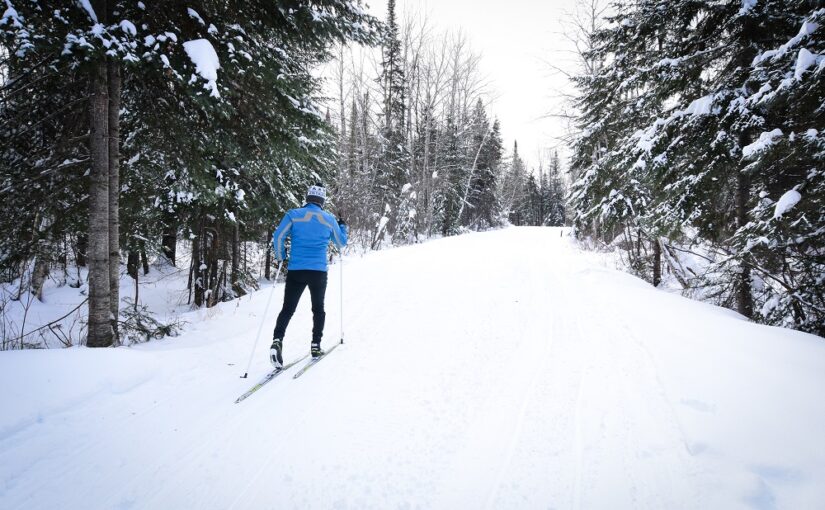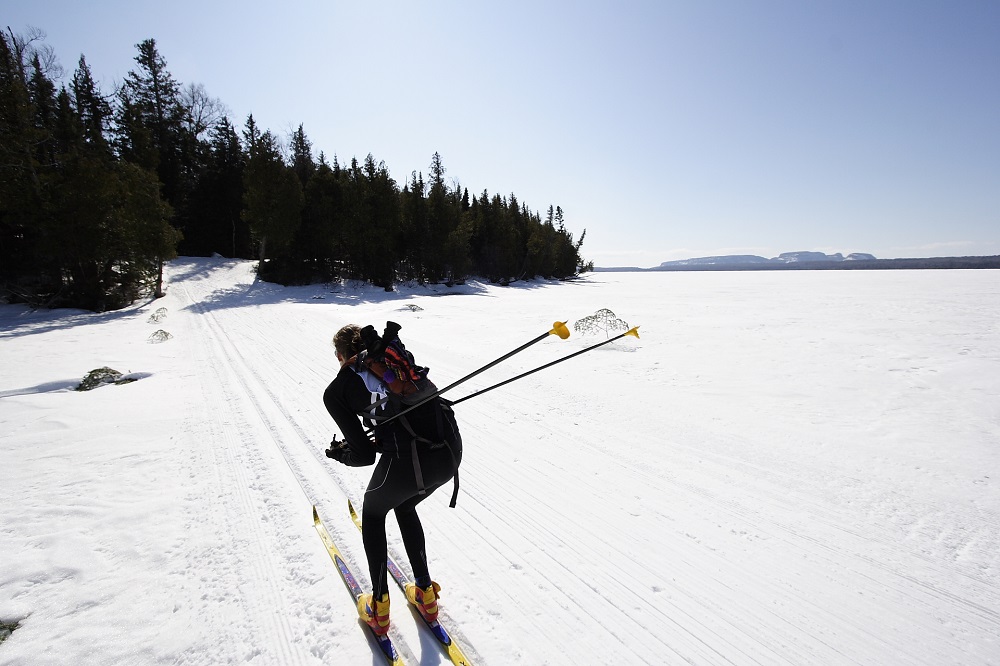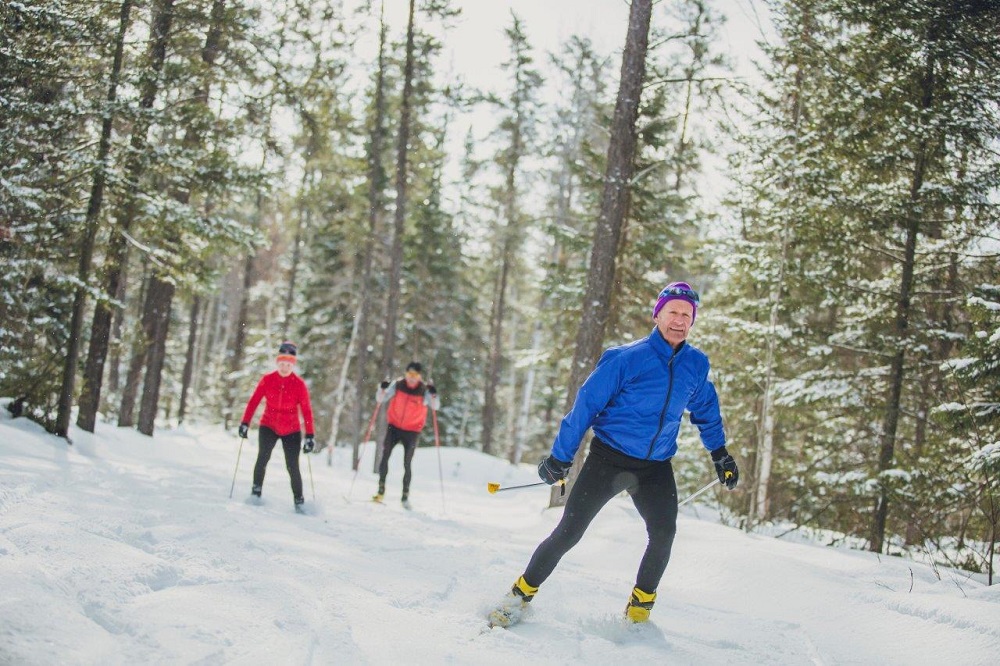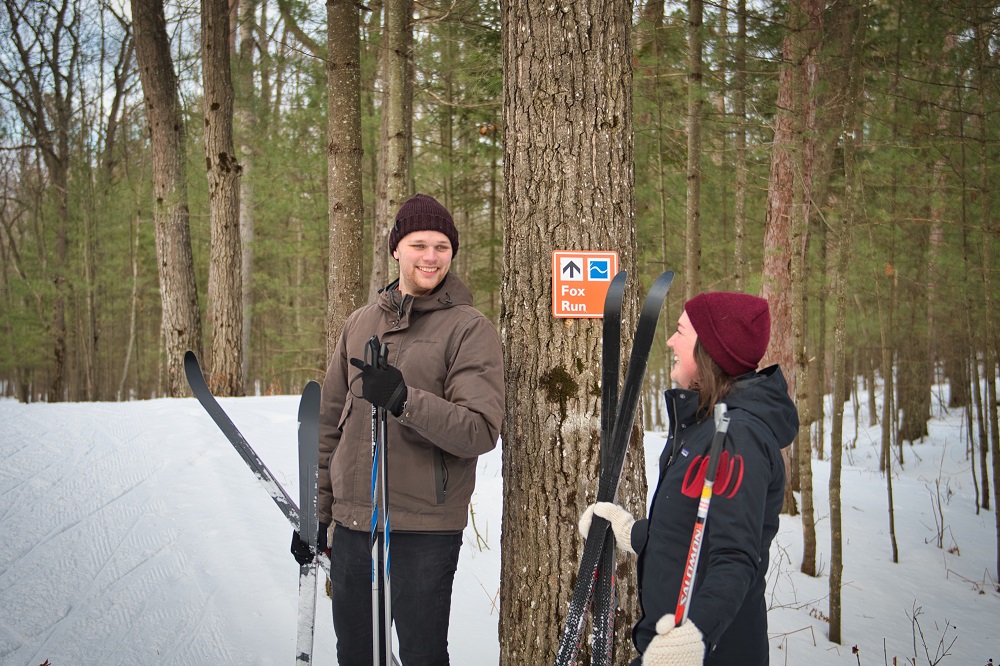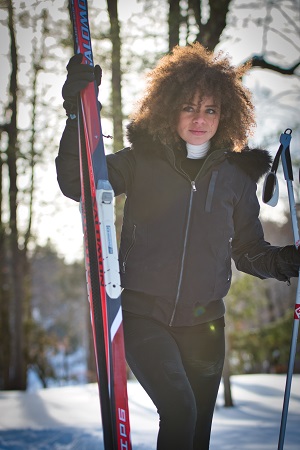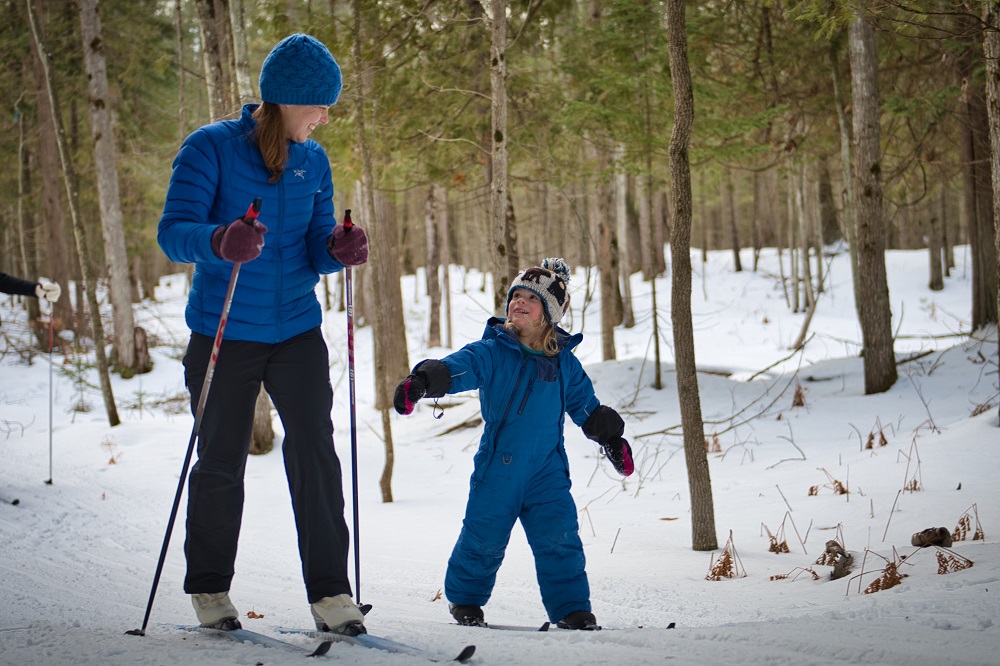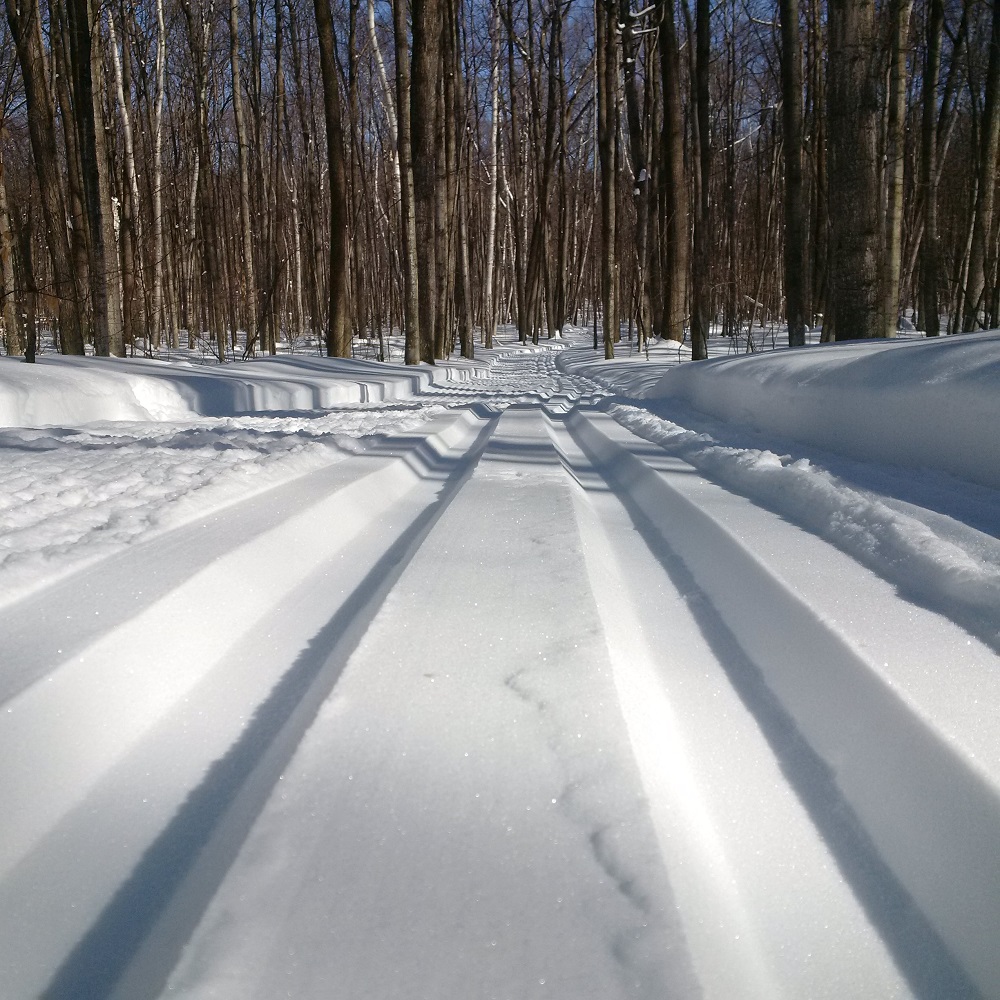Picture this: you’re gliding through a glittering, snow-covered forest. You hear bird calls, and see signs of forest life all around you.
There’s no better way to enjoy winter at Ontario Parks than on a set of skis.
If you’re not a cross-country skier already, here are some beginner tips to get you started.
Using the right equipment
There are two main types of cross-country (or Nordic) skiing at Ontario Parks: classic and skate skiing.
Many of our parks offer both types of skiing along the same trail.
Classic or traditional skiing involves skiing in groomed, recessed tracks. You’ll travel forward using a diagonal stride with a kicking and gliding motion, while keeping your skis inside the tracks.
This is probably the best way to start your cross-country skiing experience.
Skate skiing is also done on groomed trails, but these trails are packed flat. You’ll apply more of a V-pattern, or side-to-side skating motion, pushing off each ski as you go, just like an ice skater!
This method of skiing can be faster, but also requires more technique to master.
Both methods require equipment specific to that type of skiing, and sized to fit you correctly.
The basic equipment needs for both styles are a set of cross-country skis, poles, and ski boots.
Initially, renting or borrowing equipment is a great way to test out your skills and style preferences. You can look at buying your own gear later once you’re ready.
Take a lesson or join a club
As a first-timer, one of the best ways to learn technique is by taking a lesson.
Check with local outdoor stores and cross-country ski clubs to see what’s available in your area.
Lesson packages may also include equipment rentals. Rentals can have the added benefit of the skis being pre-waxed for you, saving you that step.
By joining a club, you’ll also have access to other valuable resources. In addition to beginner lessons, clubs often offer educational sessions to help you develop your skills.
Many clubs will have both adult and junior groups, so that the entire family can get involved!
You’ll have the opportunity to meet people with similar interests and potentially find new ski buddies, so you’re not heading out on the trails on your own.
In addition to ski equipment, there are a few more important things to consider when getting ready for your first cross-country ski outing.
Dressing for the occasion
Cross-country ski clothing has come a long way since the times of wool knickers and knee socks.
Today, you’ll see a variety of outfits worn out on the trail, from spandex onesies to more relaxed wardrobes.
As a beginner, there’s no need to buy any special or expensive outfits to get out there and give it a try.
Try following these clothing tips to make your first skiing experience a comfortable one:
Dress in layers
Once your body gets moving, you’re going to warm up and possibly even start to sweat. Dressing in layers allows you to take clothing off as you heat up and replace them when you cool down.
Fabrics like wool and modern synthetics will keep you warmer. Avoid cottons.
Flexible or looser clothing will provide more mobility, so skip the jeans. Try a couple forward lunges to see if your pants have the flexibility you’ll need to ski.
Layers may include long johns (top and bottoms) as a base, and wind pants with a jacket as an outer layer. Add as many layers as necessary to keep you warm, but three or four layers in total often does the trick.
Gloves versus mitts
On milder days, gloves will give you a better feel while holding your poles, but on cooler days, mitts will keep your fingers warmer.
Both can come in layered options as well.
Toques and neck warmers
Did you know that as much as 60% of your body heat can be lost from your head and neck area?
Keeping these covered when outdoors will keep you warmer overall. Simply take off your toque for a bit if you need to cool down.
Socks
Layers apply here as well.
Wearing a thinner pair of socks covered by a thicker, warmer pair will help wick away moisture. Try different sock combinations inside of your ski boots to find what works best.
Make sure your boots are snug, while allowing some wiggle room for your toes. If your sock and boot combo is too tight, your feet can get cold faster.
Change of clothes
It’s always good to bring a change of clothes for après-ski.
If you’ve worked up a sweat, you can still catch a chill on a longer drive home, even with your vehicle’s heater on.
At minimum, it’s a good idea to change your socks and upper-body layers, then snuggle into a nice warm jacket for the ride home.
Selecting your trail
If you’re taking a lesson, your instructor will pick the perfect location to get you started.
Flatter and shorter trails are a great place to start. Trails that are nestled in the trees but open to the sky will minimize chilly winds on your body, and allow you to still enjoy some sunshine on your face.
You’ll gradually work up your skills, and learn techniques to tackle going up and down the hilly sections too!
When you’re ready to try something a little longer, seek out ski trail maps for the area you’re planning to visit.
These maps will provide trail distances, levels of trail difficulty, and sometimes even trail terrain profiles, indicating the steepness of any hills that you may encounter.
Be sure to test your skills on the novice trails first.
Where to ski with Ontario Parks
Ontario Parks has several parks with groomed cross-country ski trails. Check out the ski conditions for these parks on our Snow Report.
Our parks offer different levels of services and facilities for winter activities, including skiing.
Visit each park’s webpage, and check out the icons to see what’s available and right for you.
Keep in mind: winter day-use fees apply (you might choose to buy a winter pass for the season).
So what are you waiting for?
Give cross-country skiing at Ontario Parks a try this winter and #SkiOn!
Outdoor safety is even more important during colder winter months. Check out these safety tips before you head out.
